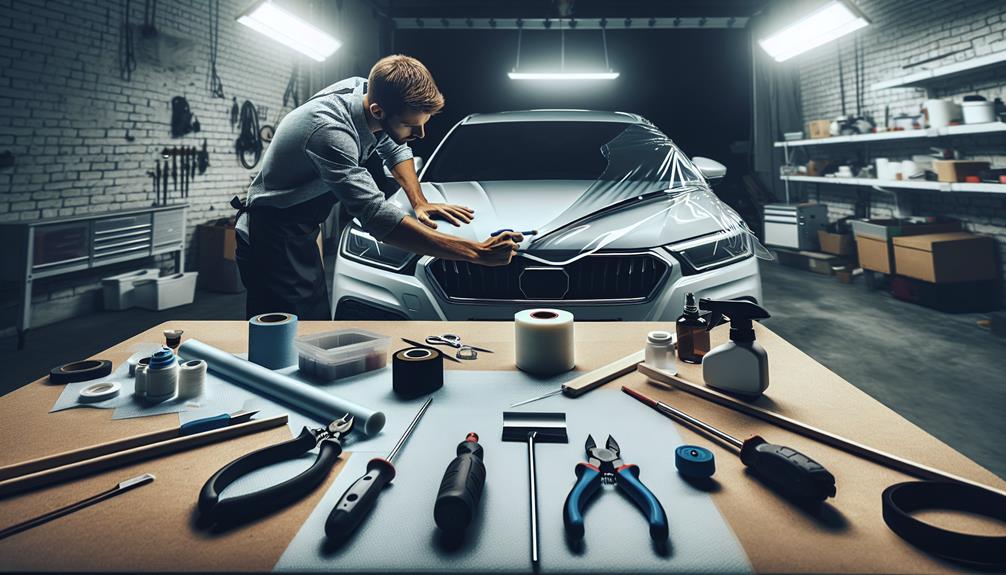A Step-by-Step Guide to Installing Paint Protection Film (PPF) Yourself

Embarking on the task of applying Paint Protection Film (PPF) to one’s vehicle is a commendable DIY project that can significantly extend the aesthetic lifespan of your car’s exterior. The initial phase involves meticulous cleaning and preparation of the vehicle’s surface, which is critical to ensuring that the film adheres properly without imperfections. As we proceed to illustrate the step-by-step application process, it is imperative to focus on techniques for aligning the film precisely and avoiding common pitfalls that can occur during installation. This guide will also explore advanced tips for those looking to achieve a professional-grade finish, which we will discuss further.
Preparing Your Vehicle
Before applying paint protection film, thoroughly clean and decontaminate your vehicle’s exterior to ensure optimal adhesion and a flawless finish. The cleaning process is not merely about aesthetics; it is a meticulous preparation stage that involves several critical steps to create a bonding surface free of impurities.
Start by washing the vehicle with a high-quality, pH-neutral car shampoo that effectively removes dirt without damaging the paint. It’s essential to use a soft microfiber cloth or a wash mitt to avoid scratching the surface.
After washing, the next step is chemical decontamination. Apply a clay bar treatment to remove embedded contaminants like tar, sap, and industrial fallout that regular washing can’t eliminate. This process will help to achieve a perfectly smooth surface, which is crucial for the film’s longevity.
Applying the Film
Having completed the thorough cleaning and decontamination of your vehicle, you are now ready to begin the application of the paint protection film. This part of the installation process is where precision and patience become paramount, ensuring that the film adheres smoothly and effectively to your vehicle’s surface.
Start by carefully positioning the pre-cut PPF sections onto the specific areas of your vehicle. It’s crucial to align the film accurately with the edges and contours of the panels to avoid misalignment, which can compromise both the appearance and protective qualities of the film.
Utilize a squeegee to gently smooth out the film, working from the center towards the edges to eliminate any air bubbles and wrinkles. This technique helps in achieving a seamless finish.
Ensure that the environment is free from dust and that you maintain a steady hand throughout the application. Every smooth stroke with the squeegee integrates the film more firmly onto the paint surface, enhancing its longevity and effectiveness.
Joining a community of DIY enthusiasts can provide additional support and insight, fostering a sense of belonging as you master the skill of PPF application. Sharing experiences and tips with others who are also committed to preserving their vehicle’s appearance can be immensely beneficial.
In conclusion, the endeavor of self-applying paint protection film is akin to performing delicate surgery on one’s prized automobile.
While the ambition to eschew professional services is commendable, it requires a meticulous hand and an almost obsessive attention to detail.
This process, though fraught with the perils of potential mishaps and aesthetic disasters, stands as a testament to the DIY spirit, blending optimism with a dash of daring—or perhaps, folly.